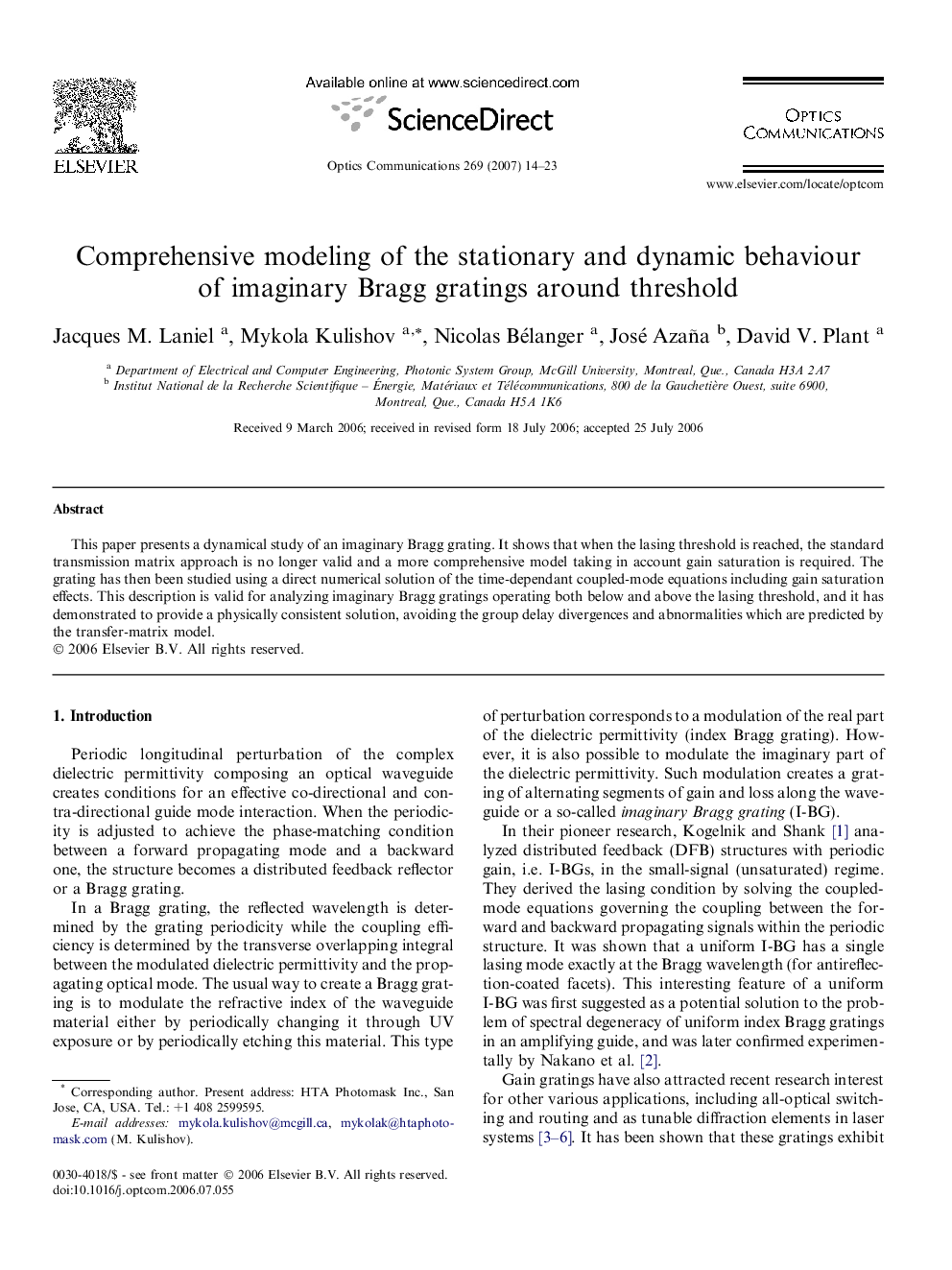| Article ID | Journal | Published Year | Pages | File Type |
|---|---|---|---|---|
| 1541977 | Optics Communications | 2007 | 10 Pages |
Abstract
This paper presents a dynamical study of an imaginary Bragg grating. It shows that when the lasing threshold is reached, the standard transmission matrix approach is no longer valid and a more comprehensive model taking in account gain saturation is required. The grating has then been studied using a direct numerical solution of the time-dependant coupled-mode equations including gain saturation effects. This description is valid for analyzing imaginary Bragg gratings operating both below and above the lasing threshold, and it has demonstrated to provide a physically consistent solution, avoiding the group delay divergences and abnormalities which are predicted by the transfer-matrix model.
Related Topics
Physical Sciences and Engineering
Materials Science
Electronic, Optical and Magnetic Materials
Authors
Jacques M. Laniel, Mykola Kulishov, Nicolas Bélanger, José Azaña, David V. Plant,
